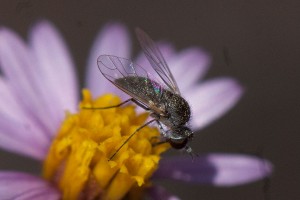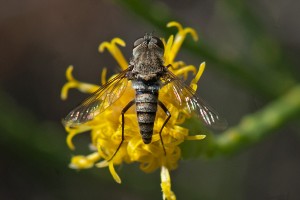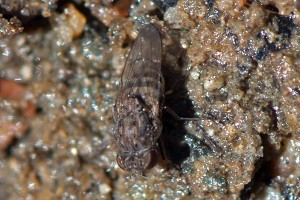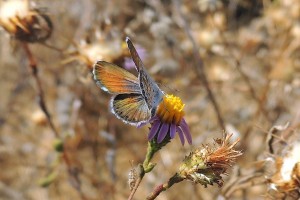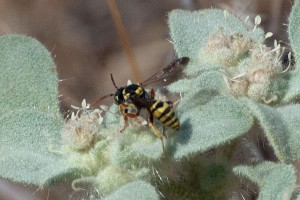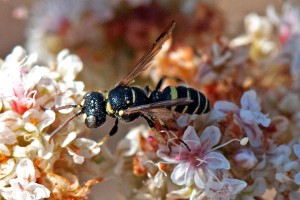We’ve recently added six new insect taxa to our BFS Invertebrate List – two bee flies, a shore fly, a butterfly, a cuckoo bee, and a wasp.
Thanks to the folks who helped observe, photograph, and identify these insects, including Jonathan Wright, Hartmut Wisch, John Ascher, Joel Kits, Martin, Wayne Mathis, and the folks at BugGuide!
Two bee flies:
- Geron sp. (Diptera: Bombyliidae)
Bee flies in genus Geron are quite small – this one was perhaps 3-4 mm. They are slender, with a a humped back and a long proboscis, which they use to drink nectar. Geron spp. are found worldwide and are considered to be benficial pollinators.
- Aphoebantus sp. (Diptera: Bombyliidae)
Bee flies in genus Aphoebantus are found mainly in the southwestern US. Of the 80 species known world-wide, 56 occur in California and 18 are found only in California. We have previously identified three species of Aphoebantus at the BFS, but this is none of those. The genus is in need of revision, and there are many undescribed species, so it may be a while before we have a species for this one.
A shore fly:
- Paralimna sp. (Diptera: Ephydridae)
We had previously noted Shore Flies as a new family (Ephydridae) on the BFS invert list, but now we have a genus name – Paralimna.
A butterfly:
- Brephidium exilis (Lepidoptera: Lycaenidae) – Western Pygmy-Blue
Jonathan Wright spotted this pretty little butterfly in East Field. The Western Pygmy-Blue is the smallest butterfly in North America with a wing span of only 1.2 – 2 cm. It is found primarily in the southwestern US from Texas to California. Known caterpillar host plants are in the Amaranth Family (Amaranthaceae), but others may be used as well.
A bee:
- Nomada (vegana species group) (Hymenoptera: Apidae) – a cuckoo bee
Although this hymenopteran may look like a wasp, it’s a cuckoo bee in genus Nomada in the Nomada vegana species group. Like other cuckoo bees, this bee is a kleptoparasite; it lays its eggs in the nest of other bees where its larvae will eat the stored pollen intended for the host bee’s larvae, and members of the Nomada vegana species group are usually kleptoparasites of Agapostemon. In at least some Nomada species, males spray females during mating with a pheromone that mimics substances produced by the host, presumably making it easier for the female to gain entry into the host’s nest. Nomada is a very large genus, with about 850 species worldwide, and the Nomada vegana species group is found throughout North America.
A wasp:
- Cerceris sp. (Hymenoptera: Crabronidae) – a weevil wasp
Cerceris species, which are found throughout the world, mainly prey on adult beetles. At least one species, C. halone, preys exclusively on acorn weevils (Curculio nasicus). Another native species, C. fumipennis, is being used to monitor the invasive Emerald Ash Borer, Agrilus planipennis.
